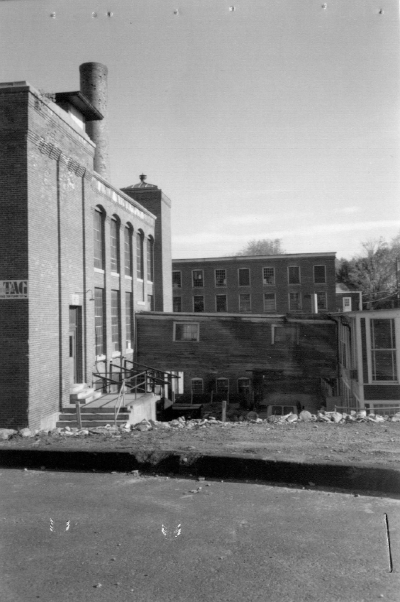History

In the beginning

As early as 1832, a cotton factory, that of Hobert & Lions, was located on this site, although no structures from that period survive. In 1852 Luther Wright and Alfred Morse purchased the site and in 1860 Morse became sole owner. Morse continued to operate a cotton mill here until his death in 1874. That year the property was sold to Milton Morse, whose heirs carried on business until 1893 when the Jefferson Manufacturing Company purchased the mill. The Jefferson Manufacturing Company is responsible for construction of most of what exists on the site today.

Jefferson Mills was comprised of nine interconnecting buildings, dating from 1850 to 1950. The oldest part of the complex faces Main Street and has symmetrically placed, segmentally-arched window openings. The mills are located in the heart of Eagleville and were the focal point of this industrial village in the nineteenth century. Today it is surrounded by many examples of late nineteenth century worker's housing.
Although an insurance map from ca. 1950 indicates that Building 1 was built in 1850, its stylistic elements are more typical of 1880s construction. It is possible that some part of this building was constructed earlier. In 1874, 70 people were employed at the mill with "twill goods" being manufactured here. In the early 20th century Buildings 1 & 2 contained carding and dusting on the first floor, and mule spinning on the third floor. Building 1 had drying in the basement while Building 2 had wet finishing in the basement. Building 3 had a repair shop and packer in the basement, weaving on the first floor, carding on the second floor, and spinning on the third floor. Building 4 had dry finishing in the basement and weaving on the first floor. Building 6 was the dye house. According to a map of 1821 , Building 1 had a hip roof originally. The Jefferson Manufacturing Company also operated a larger mill further north, on Princeton Street.

The Jefferson Mfg. Company Complex is a historically and architecturally significant property that formed the economic basis of the development of the Jefferson Village/Eagleville area of the Town of Holden from the early 19th century to the mid 20th century. While industrial activity took place on this site as early as the first decade of the 19th century, the surviving complex appears to have its origins in the third quarter of the 19th century with subsequent expansions. Prior efforts to rehabilitate the property have included the demolition of all the wood frame components of the mill complex.
References:
- Massachusetts Historical Commission: Massachusetts Cultural Resource Information System
Today
 When purchased in 2020, the building had been vacant and neglected for over 30 years.
After careful restoration, it now hosts 32 loft-style apartments, featuring modern amenities such as luxury kitchens, with granite counter tops and stainless steel appliances, central A/C, integrated security system, internet and cable TVs.
When purchased in 2020, the building had been vacant and neglected for over 30 years.
After careful restoration, it now hosts 32 loft-style apartments, featuring modern amenities such as luxury kitchens, with granite counter tops and stainless steel appliances, central A/C, integrated security system, internet and cable TVs.
amenities
The development has been awarded state and federal tax credits for its attention to preseving the historic architectural elements and character of the building and it is now listed on the National Register of Historic Places.